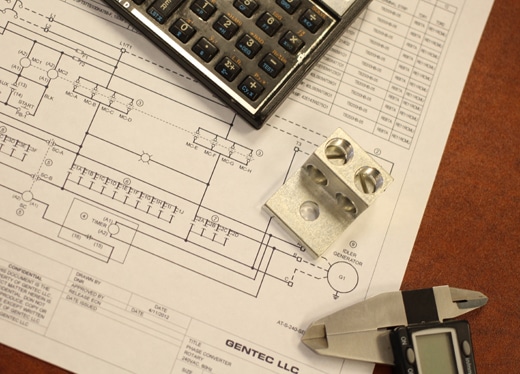For years, many companies have used (and continue to use) the inexpensive method of “stacking” run capacitors in order to get a phase converter started. Those capacitors are not taken out of the circuit once the phase converter is running, which results in extremely high voltage and current imbalance. This condition causes current overloads that will burn out motors that are smaller than what the phase converter was sized for (ie. running a 2HP mill on a 40HP converter). Furthermore, this condition will ultimately cause the phase converter itself to burn out.
The justification for continuing to build phase converters this way is that the starting circuit is fail proof. But the consequences of the resulting high voltage and imbalance can be avoided by simply using new designs and updated technology.
With the proven quality and reliability of starting capacitors and contactors, new methods to create starting circuits using these components allow the rotary phase converter to have two stages: starting and running. This gives the best of both worlds – a robust starting circuit, and a balanced running circuit.
To attain the balanced voltage, the phase converter requires a high quality custom idler/generator (not a motor), and a very specific balancing of the capacitance across the windings of the idler. Placing all of the run capacitors across one winding will not produce a balanced voltage!
Outrageous claims of voltage balance of 2% or better. The only phase converter on the market that can produce this type of voltage balance, (actually 1% or better) is the Phase Perfect digital phase converter, which we will cover in another post. Please visit www.AmericanRotary.com for more information about this product!
The only way a rotary phase converter might achieve such a voltage balance is if the load is constant (which is very rare), and the capacitance is “tuned” across each winding of the idler. Even then it would be very difficult. Switching in and out capacitors with contactors is a difficult thing to do properly. Switching them out once is fine, but not back in. The contactors just can not handle the “in theory” infinite current and the moment of contact.
It is so important to verify voltage claims! In the age of the internet, pretty much anyone can say anything…All in all, look for a (provable) 5% voltage balance, and that it can be achieved in a range of about 50-60% of the full load current of the converter.
There are several other marketing-style claims that are made by various companies. These advertising methods can be quite deceptive. The best defense is a good offense. We will continue to cover key features and benefits of phase converters, what to look for, what to avoid.
As always…please feel free to email blog@americanrotary.com if there is a specific topic you would like to see covered on this blog!



